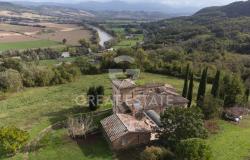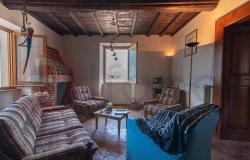 (ANSA) - Castel Sant'Angelo here is playing host to a major new show exploring the history and art of wine, a subject that has helped unite different cultures for centuries.
(ANSA) - Castel Sant'Angelo here is playing host to a major new show exploring the history and art of wine, a subject that has helped unite different cultures for centuries.
Riflessi DiVini (Reflections On Wine/Divine Reflections) features both artistic and practical objects which explore wine in a variety of contexts. The first half of the exhibit tackles the religious significance of wine over the millennia, starting with a section dedicated to the Greek-Roman divinity known as Dionysius or Bacchus.
A collection of etchings on loan from the Lungarotti Wine Foundation forms the highlight of this part. It includes a Bacchus With Goblet by the Dutch artist Hendrick Holtzius from the late 1500s, Giovanni Andrea Podesta's 17th-century vision of Four Bacchanals and a piece entitled The Drinkers Ask Bacchus To Continue His Gifts from the end of the 16th century.
Far more recent contributions to this tradition include the sketch of a Bacchus theatre costume from 1980 by Renato Guttuso and a Giorgio De Chirico interpretation of a famous 17th-century Bacchus by Guido Reni. The following section takes a look at artwork depicting passages from the Bible, centred on a massive canvas attributed to Gregorio Preti depicting the Canaa wedding feast.
The next part of the show focuses on wine and grapes featured in landscapes, such as a night vision of the moonlit heart of Rome or a marble fruit basket by the Neoclassical sculptor Antonio Canova. Throughout the show, the artwork is interspersed with wine-related items and curiosities, such as a series of ceramic beakers used as love tokens in the Medieval and Renaissance period.
A wedding goblet in blown glass and a series of antique wine flasks are also on display, as are a number of 'trick' wine-jugs.
These were usually commissioned by noble Renaissance families from master glass-workers or potters, and contained a mechanism system requiring would-be drinkers to work out a complex puzzle in order to access the wine. Another item of particular interest is an etching thought to be the world's oldest surviving "good food guide", dating back to the start of the 1700s. This shows a map of Bologna's streets, with signs marking off all the best inns of the city, with brief descriptions such as "good quail" or "good fried food".
Riflessi DiVini runs in Rome's Castel Sant'Angelo until January 15, after which it will travel to Moscow, Las Vegas, San Francisco and Beijing.












